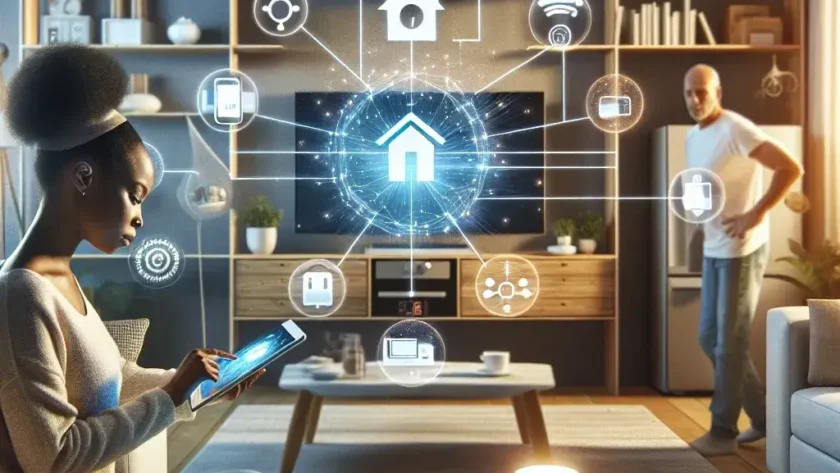Introduction to IoT
The Internet of Things (IoT) refers to the network of interconnected devices that communicate and exchange data with each other over the internet. This concept has gained immense popularity in recent years, affecting various aspects of daily life, especially in smart homes. In this article, we will explore how IoT is reshaping our everyday existence, making our routines more manageable and our homes smarter.
Understanding Smart Homes
A smart home is a residence that uses internet-connected devices to enable remote management and monitoring of systems and appliances. The integration of IoT in smart homes facilitates seamless control over different elements, providing enhanced comfort, security, and energy efficiency.
Key Components of Smart Homes
- Smart Appliances: Devices such as smart refrigerators, washing machines, and ovens that can be controlled remotely.
- Home Automation Systems: These systems allow synchronization between various devices, enhancing user experience.
- Security Systems: IoT-enabled cameras, alarms, and locks that provide real-time monitoring and alerts.
- Energy Management: Smart thermostats and energy-efficient lighting that adjust based on user preferences.
Transformations in Everyday Life
IoT is not just about smart homes; it has far-reaching implications across various aspects of daily life. Here are some key areas where IoT is making a difference:
1. Convenience
IoT devices facilitate convenience in daily tasks. With smart home devices, users can control their home environment remotely. For example, programming a coffee maker to brew at a specific time enhances morning routines.
2. Enhanced Security
IoT has revolutionized home security systems. Smart locks and cameras can be controlled from smartphones, enabling homeowners to monitor their property from anywhere. Real-time alerts on suspicious activities ensure proactive measures can be taken.
3. Energy Efficiency
Smart homes can significantly reduce energy consumption. Devices like smart thermostats learn user patterns and adjust heating or cooling accordingly, saving on energy bills while maintaining comfort.
IoT and Health Monitoring
The impact of IoT extends beyond home automation. Health monitoring devices connected to the internet enable individuals to track their health metrics in real-time. Wearable devices can monitor heart rates, oxygen levels, and physical activity, sending alerts if any irregularities are detected.
1. Remote Patient Monitoring
Healthcare providers can monitor patients without the need for physical visits. IoT devices can send vital health information directly to doctors, allowing for timely interventions.
2. Personalized Health Insights
With IoT, users can receive personalized health insights, enhancing their understanding of personal health and promoting healthier lifestyles.
The Role of Smart Cities
The integration of IoT is also transforming urban areas into smart cities. By connecting infrastructure and services, cities can improve efficiency and sustainability.
1. Smart Transportation Systems
IoT-enabled traffic management systems help reduce congestion by optimizing traffic signals based on real-time traffic data.
2. Waste Management
Smart bins equipped with sensors signal when they are full, streamlining waste collection processes and enhancing cleanliness in urban areas.
Challenges and Considerations
While IoT offers numerous benefits, it also comes with challenges such as:
- Security Risks: Increased connectivity raises concerns about data security and privacy.
- Interoperability: The standardization of protocols is critical for seamless device communication.
- Dependence on Internet Connectivity: IoT devices rely heavily on internet access; outages can disrupt functionality.
Future of IoT in Smart Homes
The future of IoT in transforming everyday life, particularly in smart homes, is promising. As technology continues to evolve, we can expect:
1. Increased Automation
More devices will become interconnected, leading to fully automated homes where everything from energy management to appliance control can be handled seamlessly.
2. Artificial Intelligence Integration
The combination of AI and IoT will lead to smarter devices that can learn user preferences, further enhancing personalized experiences.
Conclusion
The Internet of Things is profoundly transforming everyday life and smart homes, making our lives easier, safer, and more efficient. As technology continues to advance, we will likely see even more revolutionary changes in how we interact with our homes and the surrounding environment. Embracing these innovations will not only improve our quality of life but also pave the way for smarter future living.

